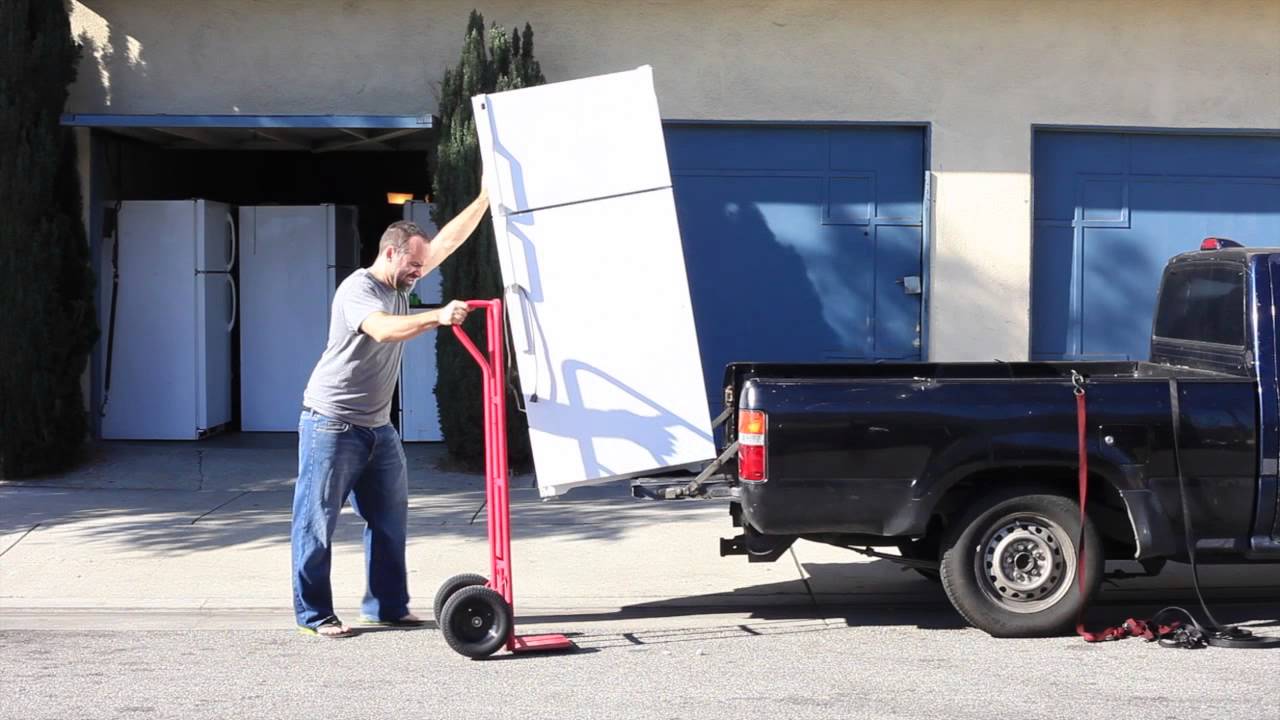How To Move A Fridge – 7 Tips

Moving a fridge DIY can end up saving you money, but is it easy and practical? Fridges are heavy, bulky, and difficult to manoeuvre, and expensive. There’s no magic hack, but these 7 tips for moving a fridge can make it easier.
What you need:
- Dolly with straps
- Measuring tape
- Moving blankets
- Tape/rope
- Screwdriver/drill
- At least 2 people
1. Clean And Defrost The Fridge
Before just unplugging the refrigerator and loading it on the dolly, you first need to prepare it for moving.
The fridge must first have time to defrost. Otherwise, it may get damaged in transit. It will also let the fluids and oils have enough time to settle, which will stop them from moving through the compressor.
Be sure to empty everything from your fridge the night before you leave. Either discard them or put them in a cooler with ice to keep them chilled during the move. It’s best to use all the items in your refrigerator in the weeks leading up to the move.
Next, clean all the surfaces. For best results, use baking soda and water.
Lastly, turn the fridge off. It should ideally be left off overnight, but if that’s not possible, then do so a few hours before the move.
2. Disconnect The Fridge
Refer to the owner’s manual before you disconnect your fridge. If it has an automatic icemaker, you will also need to disconnect the water hose. Also, remove any ice from the compartment.
If there is any ice in the freezer, using a hairdryer can help it to melt quickly. Then clean up the water. Doing this will prevent any spills, leaks, or damages from happening during the moving process accidentally.
3. Prepare The Refrigerator For Moving
After the fridge is disconnected, take the extension lead and roll it up into a cord. Nest, tape it to the back of the fridge. Remove the fridge doors if possible, according to the manual. If not, use rope or duct tape to secure them closed. Any pieces or screws which you remove, place them inside a zip lock bag so that nothing gets misplaced.
Next, use moving blankets (or other thick blankets) to wrap the exterior of the fridge. Doing so will prevent any scratches or dings.
If you are moving a long distance, removing the glass shelves and drawers from the refrigeration will provide extra protection.
4. Measure Your Doorways and The Fridge
The best way to move your fridge depends on how narrow your doorways are, and how wide the fridge is. In some situations, it may be necessary to remove the fridge doors, the doors from your home, or both. This will enable the fridge to fit through it if there isn’t enough space.
First measure the height, width, and depth of the fridge, then measure the height and width of any doorways and hallways. This will let you know in advance if you need to remove any doors, rather than trying to push the fridge on the trolley, only to find that it isn’t going to fit.
5. Guide The Fridge Into The Moving Truck
Using a plank of wood can help to guide the fridge into a truck or the back of a ute. The plank makes it a lot easier than trying to lift it onto a truck.
6. Secure The Refrigerator Before Moving
Don’t lay the refrigerator on its side. Instead, secure it upright using extra straps along the side and top of the fridge. Keeping the fridge on the dolly makes it easier than having to re-secure it to the dolly at your new home.
7. Don’t Plug The Fridge In Right Away
Wait a couple of hours before you plug the fridge in at its new location. If you transported the fridge on its side, then you should keep it upright double as long first. Check the user manual for your fridge for the recommended time before adding any food. This can range from 24-72 hours.
Moving a fridge is often a problematic and time-consuming process, which requires a dolly, and moving blankets, as well as help. If you’d rather sit back and relax while professional removalists handle it for you, Optimove Removals is here to help. For a fast quote call 1300 400 874, or get a quote online.
































